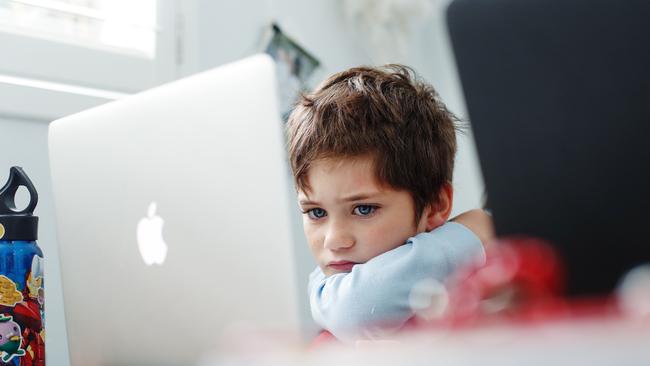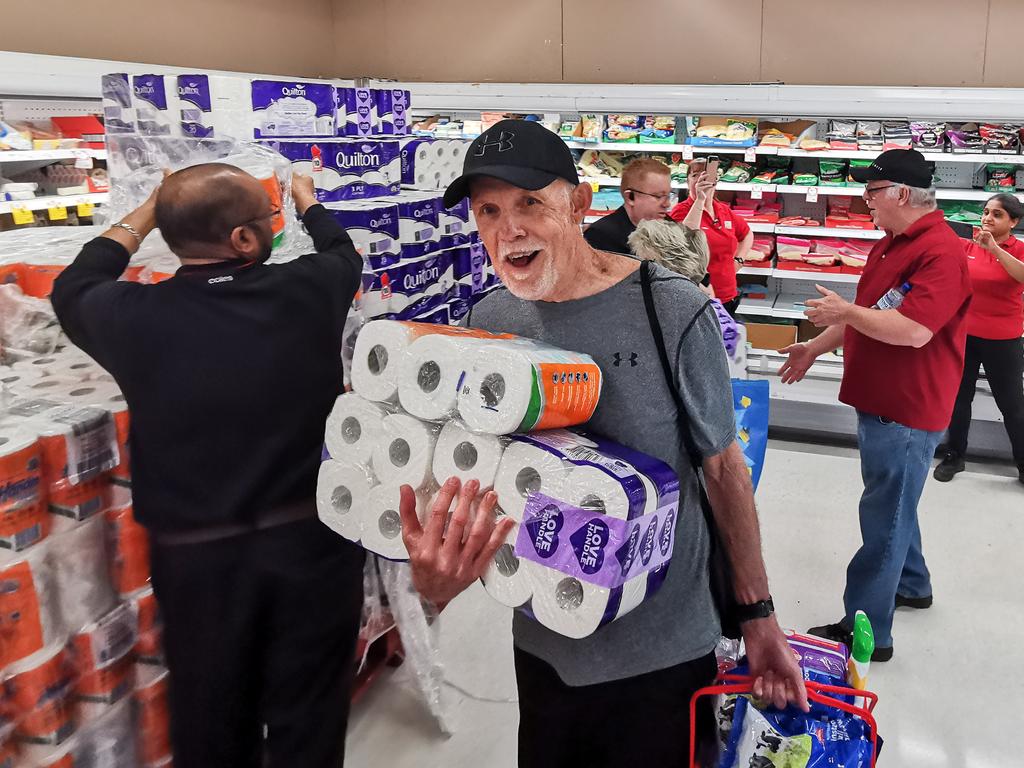Classroom confusion as teachers defy advice on school safety
Teachers’ unions defy explicit health advice that attending school is safe as they resist students’ return to classrooms.

Teachers’ unions are defying explicit advice from the nation’s most senior health officials that attending school is safe as they resist students returning to classrooms, sparking confusion among parents.
With more than a million primary and secondary students beginning term two across the nation, unions have warned state governments a return to school creates significant COVID-19 health risks to teachers and the broader school community.
The campaigns in Queensland, South Australia, NSW and Western Australia directly contradict advice to Scott Morrison from the nation’s Chief Medical Officer and the advice from state medical officers that a return to school is safe for students and teachers.
The exceptions are Victoria and Tasmania. In Victoria, the state’s Chief Health Officer, Brett Sutton, has urged that students be educated from home for the duration of the second term.
In Queensland, teachers have threatened to suspend school altogether as the number of students attending classes increases, and in South Australia the union has instigated a new campaign ahead of the school term urging parents to keep their kids at home.
This is despite the advice of the nation’s Chief Medical Officer, Brendan Murphy, that it remains safe for children to be at school and that staff could be protected through appropriate physical distancing measures.
Professor Murphy said last week that the Australian Health Protection Principal Committee, the key decision-making group for health emergencies, had never recommended closing schools.
There was no evidence of transmission between children “to any significant extent”, and it was the fears of parents and teachers driving the exodus from schools. South Australia’s Chief Public Health Officer, Nicola Spurrier, backed Professor Murphy’s position on Wednesday.
“It really is safe for children to go back to school next week,” Dr Spurrier said. “It’s safe for children, and it’s safe for teachers.”
But South Australia’s teachers’ union has launched a #keepthemhome campaign, pressing parents not to send children across the state to school when term two starts next week.
The union says it has collected its own evidence that more than 70 per cent of students are not practising physical distancing.
“Unless Premier (Steven) Marshall can guarantee the health and safety of students and staff in preschools and schools, parents should keep their children home wherever they can,” Australian Education Union state president Lara Golding said.
South Australian Education Minister John Gardiner backed Dr Spurrier and lashed out at the union for scaring people. “I encourage all South Australians to listen to the advice of our Chief Public Health Officer, Nicola Spurrier,’’ Mr Gardiner said. “Her advice is clear and unequivocal that schools should remain open and are safe environments for learning.”
Queensland teachers are threatening to “suspend operations” in term two, which started this week, if physical distancing measures proposed by the state’s Health Department meant too many students were turning up for classroom lessons.
“If adequate supplies are not available or social distancing measures required by the term-two school operating guidelines are not feasible, school operations should be suspended until they are,” Queensland Teachers’ Union president Kevin Bates said on Wednesday. “An example might be where too many students attend.”
Mr Bates said there was confusion within government about how physical distancing rules were meant to be applied.
In NSW, where more than a million students are to commence term two on Wednesday, Teachers Federation president Angelo Gavrielatos said his members were opposed to Premier Gladys Berejiklian’s phased approach to students returning to school from May 11, initially one day a week.
“Students are at lower risk (of catching COVID-19), we get that, but this policy fails to acknowledge that at some schools there will be hundreds of adults on site,” Mr Gavrielatos told The Australian.
But NSW Chief Health Officer Kerry Chant said evidence indicated transmission in the school environment was mainly from adult to adult, and “children do not appear to contribute significantly to disease spread”.
“This is different to the role children play in the spread of other respiratory infections such as flu,’’ Dr Chant said. “Therefore strategies in a school environment need to reduce close contact between adult members of the school community.”
WA teachers have raised concerns about physical distancing as the state moves to a “soft” reopening of schools on next week, its union saying “the requirements for school staff and students do not reflect the rules applying to the broader community”.
However, Victoria’s government and its teachers are in lockstep on the move to have all students learn from home where possible, as is Tasmania. Premier Daniel Andrews has flagged the likelihood of the current arrangements lasting through the remainder of term two, which began almost a fortnight ago, though reserved the option to change if the infection rates continued to slow.
Victoria’s Chief Health Officer Brett Sutton has backed the tough approach. “My advice to the Victorian government was and continues to be that to slow the spread of coronavirus, schools should undertake remote learning for term two,” Dr Sutton tweeted last week. “This is because having around a million children and their parents in closer contact with each other, teachers and other support staff has the potential to increase cases of coronavirus not just in schools but across the community.”
Mr Gavrielatos said NSW teachers were motivated during the coronavirus only to protect the health and safety of students, staff and school communities. “In the last three weeks of term, teachers and principals turned themselves inside and out to provide continuity of education,” he said.
He said bringing children back to school ahead of the easing of restrictions across the broader community created danger for staff and the public.
“Students aren’t teleported to school. Hundreds of thousands will be on public transport, many will be out in cars on the roads and when they get to school, there will be many staff around them,” he said.
Queensland Chief Health Officer Jeannette Young, a member of the Australian Health protection Principal Committee, has also declared it safe for children to attend school.
She advised that schools encourage students to stay 1.5m away from each other when “entering or leaving classrooms”.
Additional reporting: Natasha Robinson, Paige Taylor, Matthew Denholm, Amos Aikman, Elias Visontay







To join the conversation, please log in. Don't have an account? Register
Join the conversation, you are commenting as Logout